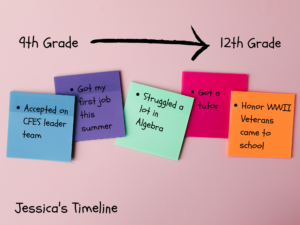The “Why?”, “Where?”, “Who?”, and “How?” of Investigating Young People’s Experiences
By Lisa Yu, Jessie Tobin, & Kristen C. Wilcox
NYKids recently released the Methods and Procedures Report of the College and Career Readiness Student Study. As an addition to the cross-case report, this report describes the rationale behind the student study and explains the methods of sample selection, data collection, and data analysis. It also includes the protocols for interviews and focus groups and the relevant research literature that informed the study.
Why Study Students’ Perspectives?
Many scholars have called attention to the paucity of students’ voices in school improvement efforts. As major stakeholders in their own educational experiences, students can be viewed as essential informants and partners in creating more equitable and effective schools and school systems.
A major goal of NYKids’ student study was to understand young people’s perceptions of their learning experiences in odds-beating schools (i.e. those schools that have achieved a trend of above-predicted graduation rates among different populations of students).
To help the juniors and seniors who agreed to participate in our study express their ideas, NYKids researchers used artifacts and drawings to complement interviews and focus groups.
Where Did We Go?
Two schools, Crown Point Central High School and Malverne Senior High School, were appropriate for this study because they:
1) achieved a pattern of better-than-predicted graduation rates among African American/Black, Hispanic/Latino, English language learners, and/or economically disadvantaged students in the College and Career Readiness Phase I study.
2) are situated in different types of communities – one rural and one suburb with micropolitan characteristics (i.e. relatively high ethnic diversity).
3) maintained a trajectory of significantly better graduation rates over several years.
Who Participated?
After following protocols to protect the identities of participants and gain parent consent for students’ participation as well as their own, a total of 22 juniors and seniors were included in the study. They ranged in gender identification, ethnic and cultural backgrounds, and socioeconomic status. They also ranged in interests including those intending to pursue the military, college, or enter the workforce directly after graduation. Finally, we protected their identities by assigning pseudonyms.
How Did We Engage Participants and Analyze Data?
Two NYKids researchers visited the schools to conduct focus groups and interviews.
During the interviews, students were prompted to draw “ecological-maps” that illustrated important places to them inside and outside of school. NYKids researchers also prompted students to craft timelines in which they documented critical events throughout their lives to better understand what was most influential in shaping their trajectories in high school.
The team used a multi-step procedure of transcribing audio-recordings, coding transcripts, organizing codes into themes and dimensions, and then crafting case studies. We shared the case studies with participants to check for accuracy and to validate the final reports. To learn about our confidentiality procedures, check out our recent blog discussing the ways in which NYKids researchers follow ethical guidelines for human subjects research.
For more information about our study or if you wish to have guidance on how to use any of NYKids’ research instruments please reach out to us nykids@albany.edu
